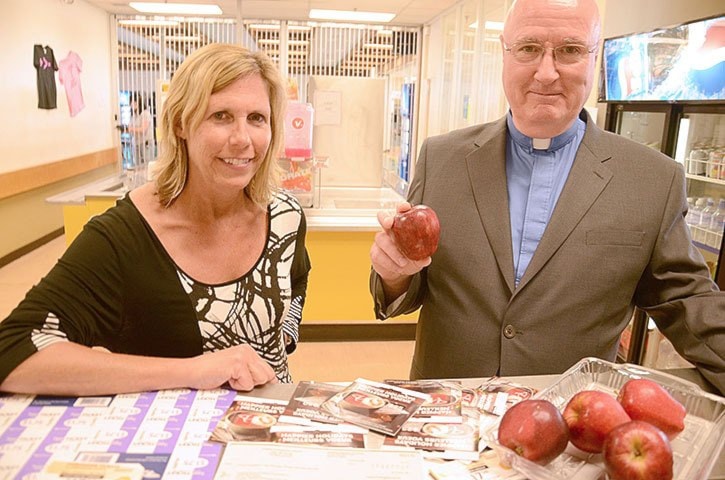The congregation at Langley Presbyterian likes the idea of helping out the grandkids.
The kids may not be their own grandkids but at-risk and homeless youth at Langley Secondary are someone’s, and the church members are only too pleased to help them. Each Christmas the small congregation does a special offering and donates the money, even though it already gives to the Langley Food Bank, a food program in Cloverdale and does other good works.
After seeing a media report about Langley Secondary students who are homeless or at risk of being homeless, the church decided that’s where its $2,291.50.
Rev. Dennis Howard stopped by the school with the donation and learned more about how the school tackles social issues. He hoped others would come forward to help local students. The funds will go to provide food for students and was given to the Langley School District Foundation.
For LSS, there’s related social issues staff encounters – homelessness and hunger.
LSS started working closely with Aldergrove Neighbourhood Services (now Encompass Support Services Society) about five years ago to tackle some of these problems.
Principal Dawne Tomlinson said every school faces these issues but older students are often overlooked.
“They don’t consider themselves homeless,” so they are invisible, she said.
But anyone not living in the family home is homeless and eventually the kids run out of options for couch surfing at friends.
“They don’t have a healthy, safe environment so their safe environment becomes the school,” she said.
They often end up in limbo with no food on evenings and weekends and sometimes even no toiletries for personal grooming.
The school is also home to students going hungry.
“We have a lot of kids that don’t have a lot of food,” Tomlinson explained.
But this is high school and staff have had to come up with ways to help the young people get food, whether it’s during the school day or for evenings and weekends, without pinning a bulls-eye on the kids’ backs.
“As soon as they become visible, they become targets,” she explained.
There’s social stigma to poverty and the lack of resources.
The school tries to create an atmoshpere where students feel they can talk to staff and counsellors.
They can get food in the cafeteria without having to announce to the world that they have no money and students can go to one of about five spots around the school to get healthy snacks, in a low key manner.
Tomlinson added that more than talk is needed. The school has bus tickets and passes for homeless students who must move out of the community to access shelter.
And the school can provide grocery cards so the students can get a bit of food or some basic personal care items.
“It’s taking down barriers for them to get to school,” Tomlinson said.
The food can serve as a means to bigger conversations, such as why there is no food in the home.
Tomlinson tears up when asked about whether the youth understand and appreciate the efforts of staff.
“They totally get it,” she said of the students.
A lot of the social problems end up in her office and she gets to see that some simple resources give the kids hope.
Tomlinson said it’s about helping kids who want to be in school, stay in school.
“I think it’s just that sense of hope, and a sense of relief that someone cares,” she said.
